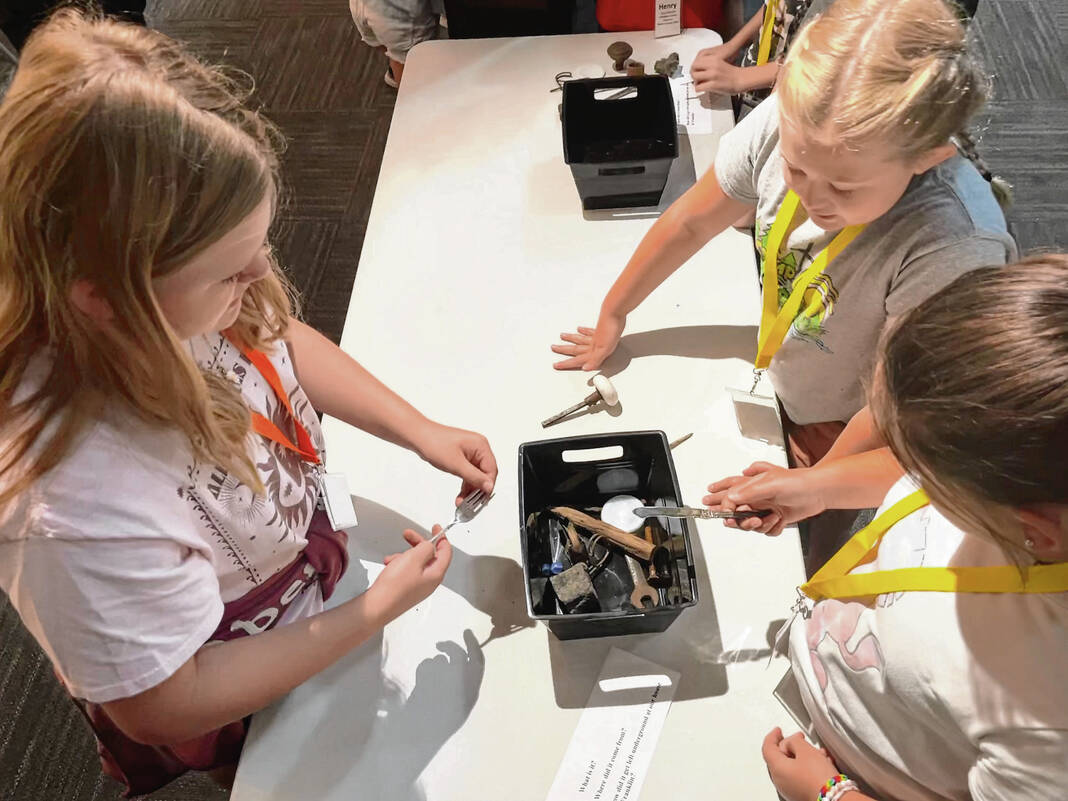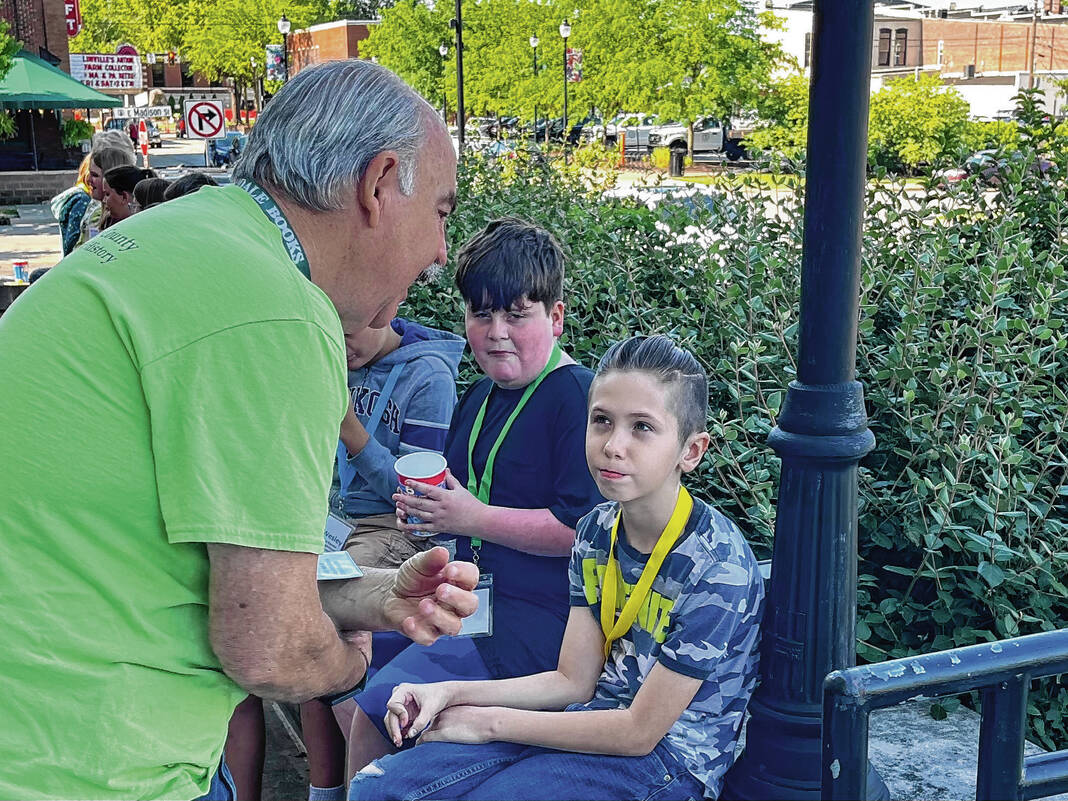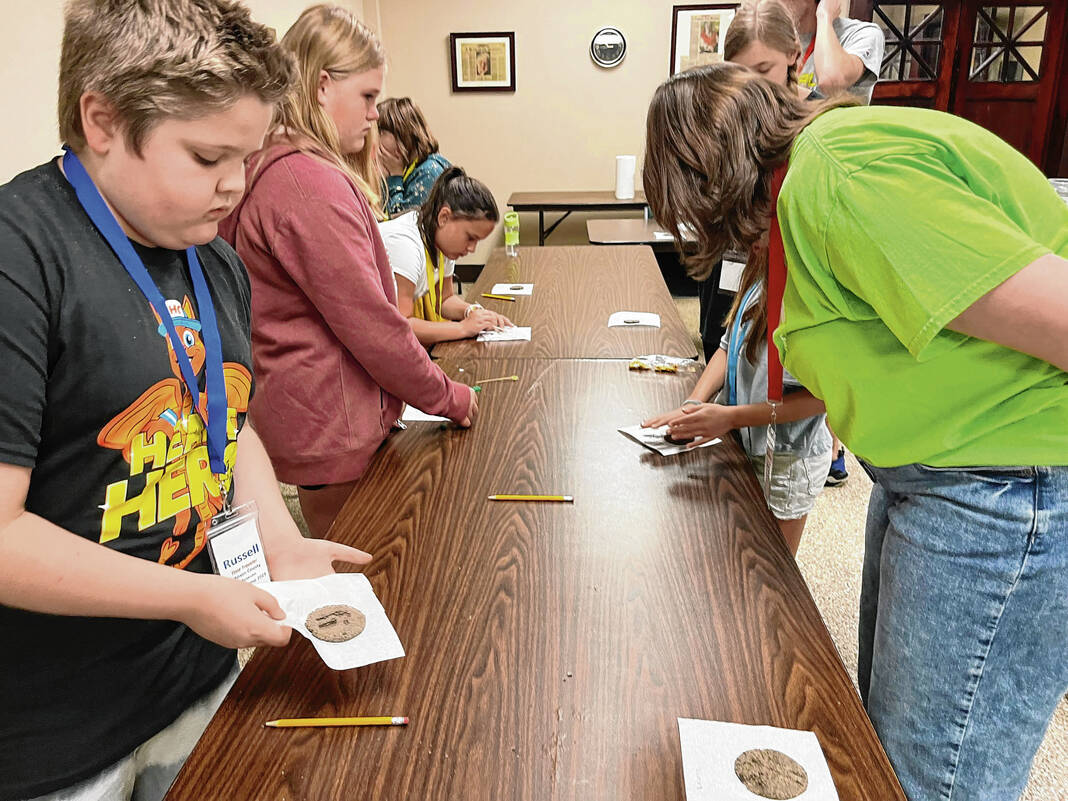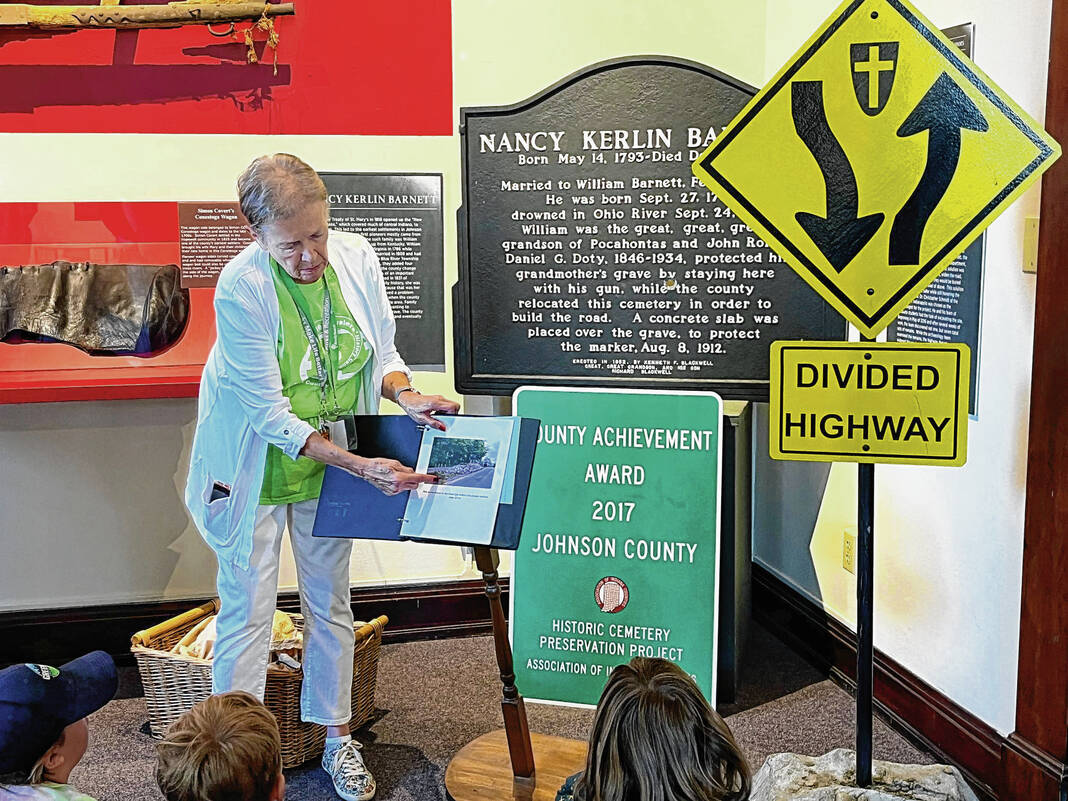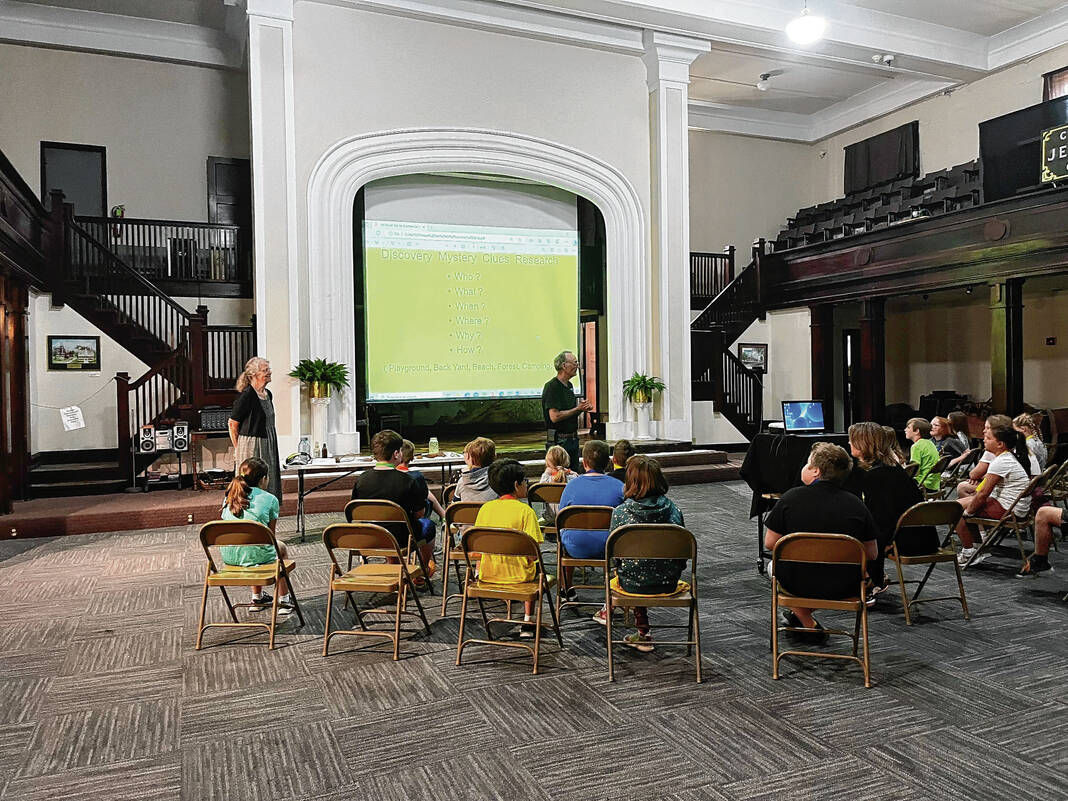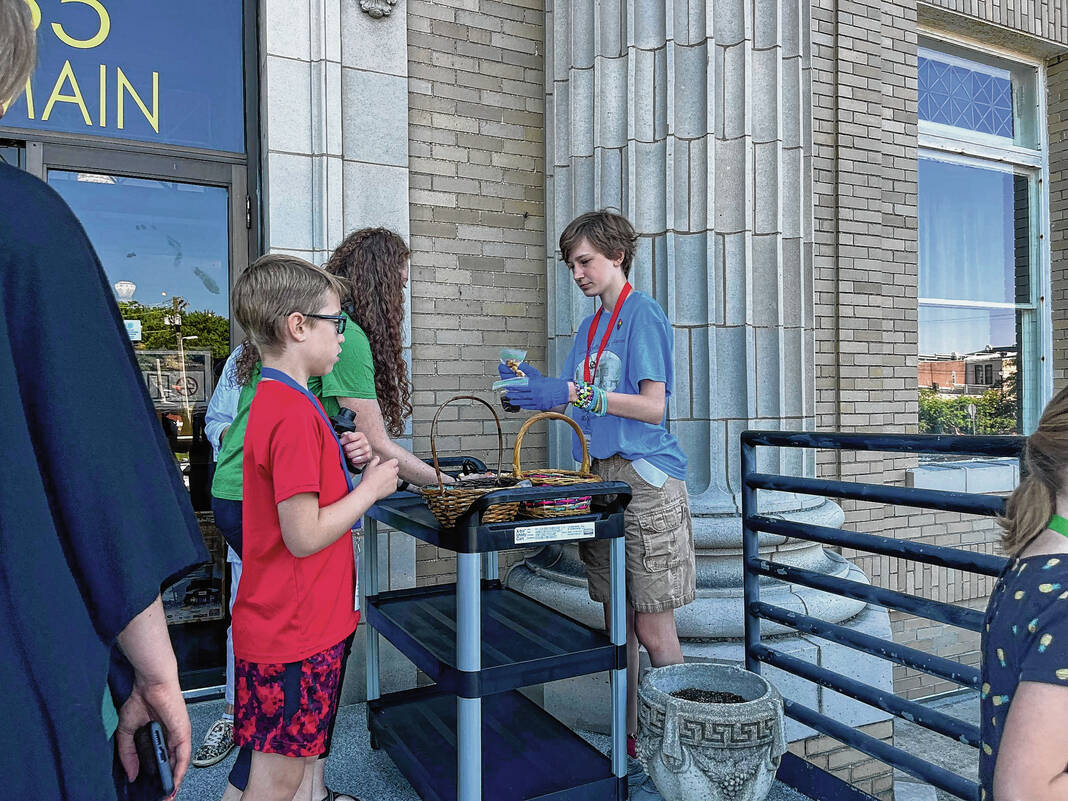For over 10 years, the Johnson County Museum of History has invited history-hungry kiddos to scour the museum’s halls and learn about Johnson County’s vast history — from pioneer times to the sock hop past of the 1950s. With the bicentennial, Time Travelers’ History Camp gives kids the opportunity to soak it all in during a milestone year.
Campers see different exhibits through a childlike lens while making crafts that coordinate with each of the five days of the camp. From July 10 to July 14, each day prioritizes something different, like the civil war or the initial creation of the county.
Fully immersing the children in the pioneer times on Monday, camp leaders offered snacks that were realistic to the 1800s. Parched corn, beef jerky and apples were on the menu. A few campers gave the crispy corn an odd look, but education coordinator Jane Hughey explained to the kids that back in those times, pioneers didn’t have a way to keep their food cold. Dried items were easier to store, and things like beef jerky could sustain people for a long time because of their protein.
“Oh! That would make sense. They didn’t have a fridge,” one boy whispered to another before taking a less apprehensive bite.
But food wasn’t the only thing camp goers enjoyed on Monday morning. During the camp, the children also participated in hands-on crafts. After Hughey taught campers about the difference between fossils and artifacts, they were sent downstairs to create their own fossils, customized with special designs. One camper got really creative, putting as he described it “something between a dragon and a dinosaur head” on his fossil.
Offering kids a personalized experience, they were split into smaller groups, rotating from relevant exhibit to exhibit.
Retired educator and journalist Rich Gotshall said he was the most excited to teach kids about the Hendricks Cabin which sits next to the museum, because of all the research he has done on it. Gotshall knows details about the cabin’s origin, how it was built and who lived in it before it became the property of the museum.
One of the children asked Gotshall about the structure, and even though Monday wasn’t about the cabin, he couldn’t resist.
“Well, we’ll talk about that tomorrow, but I’ll tell you now anyway! It was built around 1835,” Gotshall shared. He joked that on the cabin’s day to be featured, he would make sure to show the little boy how the cabin was built, all while complimenting him on his curiosity.
“Ask those questions tomorrow! Those are things other kids will want to know and they’re very good questions,” he said.
Curator Allie Baker spoke to the kids about the museum’s grave in the road exhibit, which tells the story of Nancy Kerwin Barnett whose grave was paved over the middle of County Road 400 South. She shared her findings with students, even showing special photos of the grave that the kids probably wouldn’t be able to safely view otherwise.
Kids seemed to enjoy getting to touch antiques more than anything. Local couple Carol and Mike Dale shared photos and findings from an old house they purchased a few years ago. They told the campers how they went about exploring their new home, digging out flooring and walls to find old objects like cutlery and pennies. The Dales brought boxes full of these items for the kids, asking them to figure out what the items were and think about why they were found in crawlspaces or underground. Some campers thought about each item logically, while others were more creative, suggesting that forks were miniature swords.
The camp is special to both its campers and its volunteers. Sisters Maria and Claire Schenk decided to volunteer for the camp after their brother got too old to help volunteer. They have a bunch of younger siblings, so they said it was pretty easy to keep track of little ones. They also said it was cool to see the children experience the different exhibits. They’re both the most excited for the civil war day, mainly because their grandfather will be coming in as a speaker.
Hannah Hoggatt, a volunteer from Greenwood, said she also loved seeing the kids discover history.
“You learn about Indiana very generally in school but this is very fun, so very interactive,” Hoggatt said.
More than anything, the museum’s director, David Pfeiffer, wants children to soak up any knowledge they can about the past.
“Studying history shows us where we’ve been and can help be a guide for where we are going, which I think is especially important for kids,” Pfeiffer said. “History also encourages important skills, such as research, that will always be important in life.”


